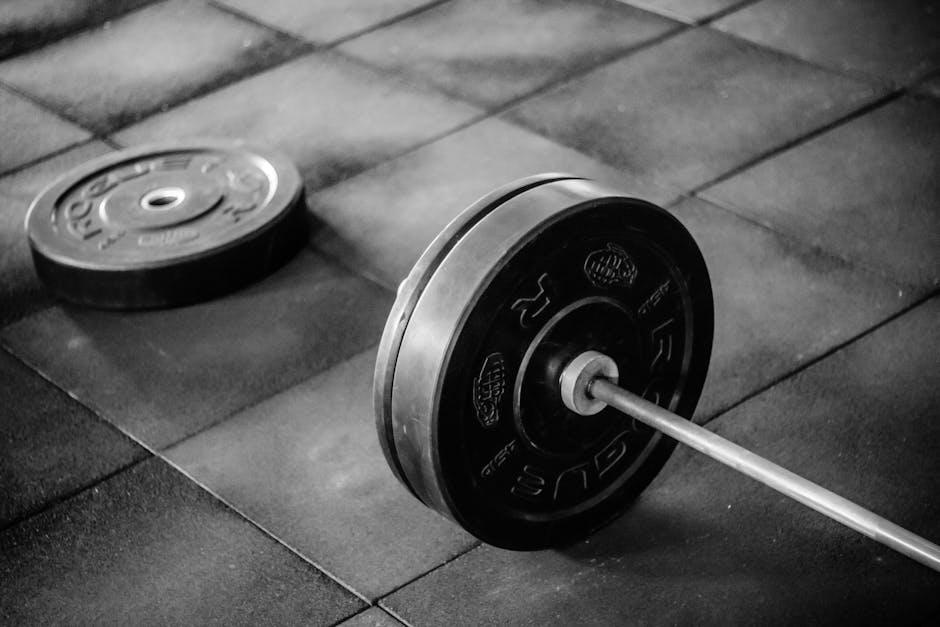Embarking on a weight loss journey is a commendable decision that can lead to a healthier and more vibrant life. While diet plays a crucial role, incorporating weights into your fitness routine can significantly amplify your results. This article will guide you through the process of using weights to enhance your weight loss efforts, helping you to not only shed pounds but also build strength and boost your overall well-being. With the right approach and a positive mindset, you’ll discover how lifting weights can transform your body, accelerate your progress, and keep you motivated every step of the way. Whether you’re a beginner or looking to spice up your current routine, this guide is designed to empower you with the knowledge and confidence to harness the power of weights effectively. Let’s dive in and unlock the potential of weight training for your weight loss success!
Selecting the Right Weight for Your Fitness Level
Choosing the appropriate weight is crucial to maximize your workout results and prevent injury. Start by assessing your current fitness level. If you’re a beginner, it’s wise to begin with lighter weights to focus on mastering form and technique. For those with more experience, gradually increase the weight to continue challenging your muscles and avoid plateaus.
Here are a few tips to help you select the right weight:
- Form Over Ego: Ensure that you can perform the exercise with proper form for the entire set. If your form starts to falter, it’s a sign that the weight might be too heavy.
- Repetition Range: Choose a weight that allows you to complete your desired number of reps, typically 8-12 for muscle growth and 12-15 for endurance, while still feeling challenged.
- Progressive Overload: As you become stronger, gradually increase the weight to keep your muscles adapting and growing.
Remember, the right weight is not about lifting the heaviest dumbbells in the gym, but rather about using a weight that is effective and safe for you. With the right approach, you’ll enhance your weight loss journey and build strength simultaneously.

Crafting a Balanced Routine for Maximum Results
To achieve optimal weight loss while using weights, it’s essential to design a routine that blends strength training with other forms of exercise, ensuring a holistic approach to fitness. Start by incorporating a variety of weight exercises that target different muscle groups. This not only helps in building lean muscle but also boosts your metabolism. Consider alternating between upper and lower body workouts throughout the week, allowing ample recovery time for each muscle group.
- Monday & Thursday: Focus on upper body exercises such as bicep curls, tricep extensions, and shoulder presses.
- Tuesday & Friday: Shift to lower body workouts like squats, lunges, and deadlifts.
- Wednesday: Incorporate a mix of cardio and core exercises to maintain balance.
Embrace progressive overload by gradually increasing the weights you use. This strategy not only challenges your muscles but also ensures continuous improvement. Pair your weight training with regular cardio sessions, such as brisk walking or cycling, to enhance calorie burning. With consistency and dedication, your balanced routine will pave the way for significant weight loss results.

Incorporating Strength Training into Your Weight Loss Plan
Embracing strength training as part of your weight loss journey can be a game-changer. Building muscle mass not only enhances your physique but also boosts your metabolism, helping you burn more calories even at rest. To get started, focus on compound exercises that work multiple muscle groups simultaneously. These exercises include:
- Squats
- Deadlifts
- Bench Press
- Pull-Ups
- Overhead Press
Incorporate these exercises into your routine at least two to three times a week, ensuring you allow your muscles time to recover and grow stronger. Progressive overload is key—gradually increase the weight or resistance to continue challenging your body. Remember, consistency and proper form are your allies in achieving sustainable weight loss and a healthier, stronger you.
Tracking Progress and Celebrating Milestones
When embarking on your weight loss journey with weights, keeping track of your progress is crucial to maintaining motivation and ensuring you’re on the right path. Begin by setting specific, measurable goals. This might include targets such as increasing the weight you lift, improving your form, or reaching a certain number of repetitions. Document these goals in a fitness journal or use a tracking app that allows you to visualize your progress over time.
- Record your workouts: Note down the weights used, sets, and reps to see your strength improvements.
- Take photos: Visual evidence can be a powerful motivator. Capture your journey to witness physical changes.
- Celebrate small victories: Each milestone, no matter how small, is a step closer to your ultimate goal. Reward yourself for consistency and achievements.
Recognizing and celebrating these milestones not only boosts your confidence but also reinforces the positive habits you’re building. Whether it’s a personal best in lifting or simply feeling more energetic, acknowledging these achievements keeps the momentum going. Remember, every step forward is progress, and every bit of progress deserves recognition.
